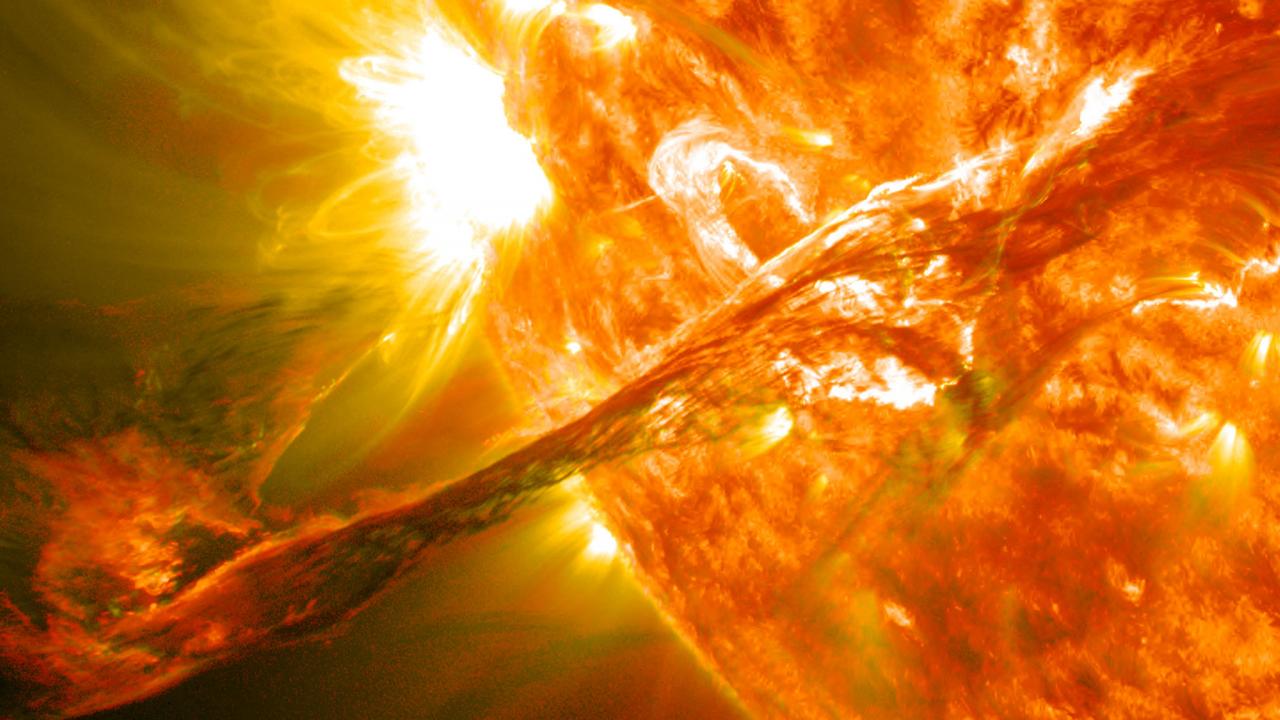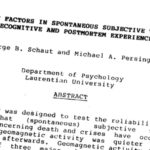Russian Study on Geomagnetic Storms and Suicides
Many animals can sense the Earth’s magnetic field, so why not people, asks Oleg Shumilov of the Institute of North Industrial Ecology Problems in Russia.
Shumilov looked at activity in the Earth’s geomagnetic field from 1948 to 1997 and found that it grouped into three seasonal peaks every year: one from March to May, another in July and the last in October.
Surprisingly, he also found that the geomagnetism peaks matched up with peaks in the number of suicides in the northern Russian city of Kirovsk over the same period.
Shumilov acknowledges that a correlation like this does not necessarily mean there is a causal link, but he points out that there have been several other studies suggesting a link between human health and geomagnetism.
For example, a 2006 review of research on cardiovascular health and disturbances in the geomagnetic field in the journal Surveys in Geophysics (DOI: 10.1007/s10712-006-9010-7) concluded that a link was possible and that the effects seemed to be more pronounced at high latitudes.
Twinned peaks
The review’s author, Michael Rycroft, formerly head of the European Geosciences Society, says that geomagnetic health problems affect 10 to 15% of the population.
“Others have found similar things [to Shumilov’s results] in independent sets of data,” says Rycroft. “It suggests something may be linking the two factors.”
A 2006 Australian study, for example, also found a correlation between peaks in suicide numbers and geomagnetic activity (Bioelectromagnetics, vol. 27 p 155).
Brain storms
Psychiatrists too have noticed a correlation between geomagnetic activity and suicide rates. A review of 13 years of South African data on suicides and magnetic storms in South African Psychiatry Review, vol. 6 p. 24) suggested a link.
Geomagnetic storms – periods of high geomagnetic activity caused by large solar flares – have also been linked to clinical depression.
In 1994, a study was published suggesting a 36.2% increase in the number of men admitted into hospital for depression in the second week after geomagnetic storms (British Journal of Psychiatry vol 164, p 403).
What may be the cause of the link, if there is one, remains unknown. “The intriguing correlation between geomagnetism and suicide justifies more research into its mechanism,” says Rycroft.
Environmental cue?
“The most plausible explanation for the association between geomagnetic activity and depression and suicide is that geomagnetic storms can desynchronise circadian rhythms and melatonin production,” says Kelly Posner, a psychiatrist at Columbia University in the US.
The pineal gland, which regulates circadian rhythm and melatonin production, is sensitive to magnetic fields. “The circadian regulatory system depends upon repeated environmental cues to [synchronise] internal clocks,” says Posner. “Magnetic fields may be one of these environmental cues.”
Geomagnetic storms could disrupt body clocks, precipitating seasonal affective disorder and therefore increase suicide risk, Posner told New Scientist.
There seems little doubt that the brain responds to electromagnetic fields – coils that generate electromagnetic fields can trigger muscular twitches when placed over a person’s skull.
However, Shumilov, who was presenting his data at the European Geoscience Union (EGU) annual meeting in Vienna, Austria, last week, does not believe geomagnetic activity influences everyone equally.
Suicide statistics
He also presented hospital data from 6000 pregnant women who had routine scans of their fetus’s heart rates between 1995 and 2003. In 15% of the fetuses, periods of disturbances in their heart rates coincided with periods of high geomagnetic activity.
Shumilov accepts that light levels in northern countries can influence depression, but believes that geomagnetism may be another factor, and one that is under-appreciated.
The trouble with studying the causes of suicide is that it is a rare condition, says Klaus Ebmeier, a psychiatrist at the University of Oxford. “You are bound to get spurious effects. A study of the causes would have to enrol a country’s entire population.”
Cosmo Hallstrom, a member of the Royal College of Psychiatrists, agrees. “You have to be very careful with suicide statistics,” he says. “Countries report them differently. Catholic countries are very reluctant to diagnose suicide. Scandinavian countries consider it a social injustice not to.”





